Karnak – Egypt’s Greatest Temple
Karnak – the very word sounds mysterious, arcane and yet somehow entrancingly inviting, almost as if it is beckoning one as from a dream to come visit this hallowed place that has stood for millennia. Does that sound hokey? Not to legendary horror writer and all round literary genius, H.P.Lovecraft who was inspired by the ruins of the Temple of Karnak and the ancient gods depicted on its walls, to create an entire mythos that sends chills down the spines of his millions of readers to this very day. And not to me.
I first read about Karnak in C.W. Ceram’s Gods, Graves and Scholars, a book I can honestly say changed my life. First published in English in 1954 and still in print today, it is rather ambitiously subtitled, The Story of Archaeology.
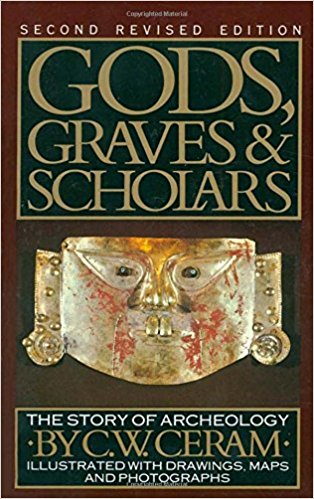
It was my first introduction to the many great archaeological sites around the world and awakened in me a burning desire to visit them all. Near the top of the list was the Temple of Karnak and today I am finally going to get there along with a small group of Canadians and Americans who have travelled to Egypt with Adventures Abroad. We have been in Luxor for a few days and I’ve already written posts the Temple of Luxor and the Luxor Museum. Won’t you join us as we explore the massive temple complex we know as Karnak?
The History of Karnak
Until about 1,000 years after the Great Pyramid was completed, Karnak was a relatively unimportant place near the city of Thebes. That all changed when King Senusret I, who ruled for forty-five years, embarked on a temple building project that lasted right up until the end of the last Egyptian dynasty, the Ptolemies. The Luxor Museum has this magnificent red marble bust of him on display.

The principal god worshipped at Karnak was Amun, later to become Amun-Ra, chief god of all Egypt. Others worshipped here were Amun’s consort Mut and their son Khonsu.
Here are a few facts you might want to know before visiting Karnak. After the Pyramids, this is the most popular tourist destination in Egypt, but with the great decline in Egyptian tourism, it feels nowhere near as crowded as the Giza sites. According to some it is either the largest or second largest ancient religious site in the world. How you would measure these things is beyond me, but a visit to Karnak will take anywhere from a couple of hours to a good part of a morning or afternoon. The reality is that most of what was the Karnak complex is not open to the public and what you are seeing is primarily the portion dedicated to Amun. Karnak has been a UNESCO World Heritage Site since 1979, one of the very first places so designated. Okay, armed with those facts let’s begin our visit.
We take a bus from our hotel and reach the site of the Temple of Luxor in about five minutes. From here we follow a route that parallels a roadway that once directly connected that temple with Karnak and which the Egyptian government hopes to restore over time. The parking lot for the Temple of Karnak is huge, but only a fraction full. We alight and begin our tour led by our Egyptian guide Ahmed Mohsin Hashem who has a master’s degree in archaeology, can read hieroglyphics and is an all round great guy to travel with. Despite its popularity, the area around the entrance is not particularly overrun by hawkers and by Egyptian standards things are quite calm and collected.
Here is a model of the Temple of Amun in Karnak as it once looked. It follows the usual of pattern of an entrance with two pylons followed by an inner court through which you pass and then two inner pylons to the hypostyle and the inner sanctum where the god was believed to reside.
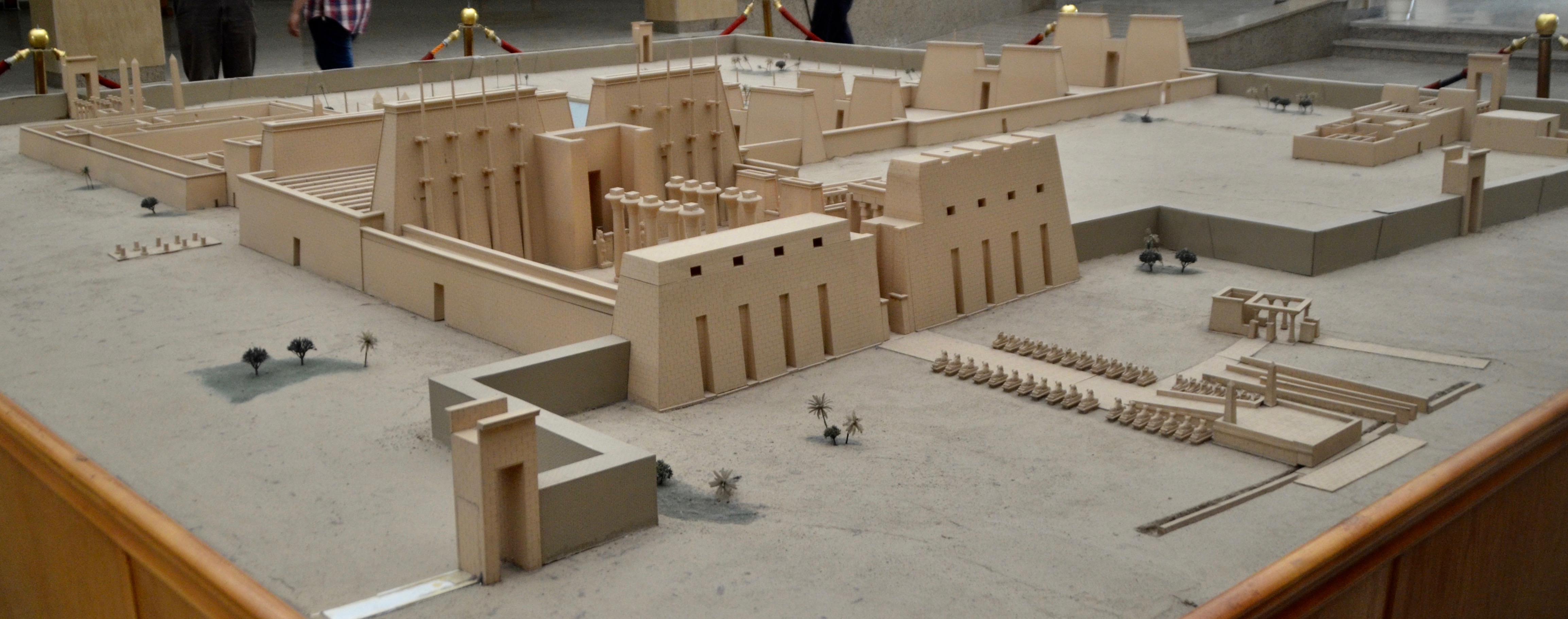
The entry way to the outer pylons is lined with two rows of ram-headed sphinx’ which contrast with the human-headed sphinx’ that flank the entrance to the Temple of Luxor. These represent Amun whose animal form was a ram.
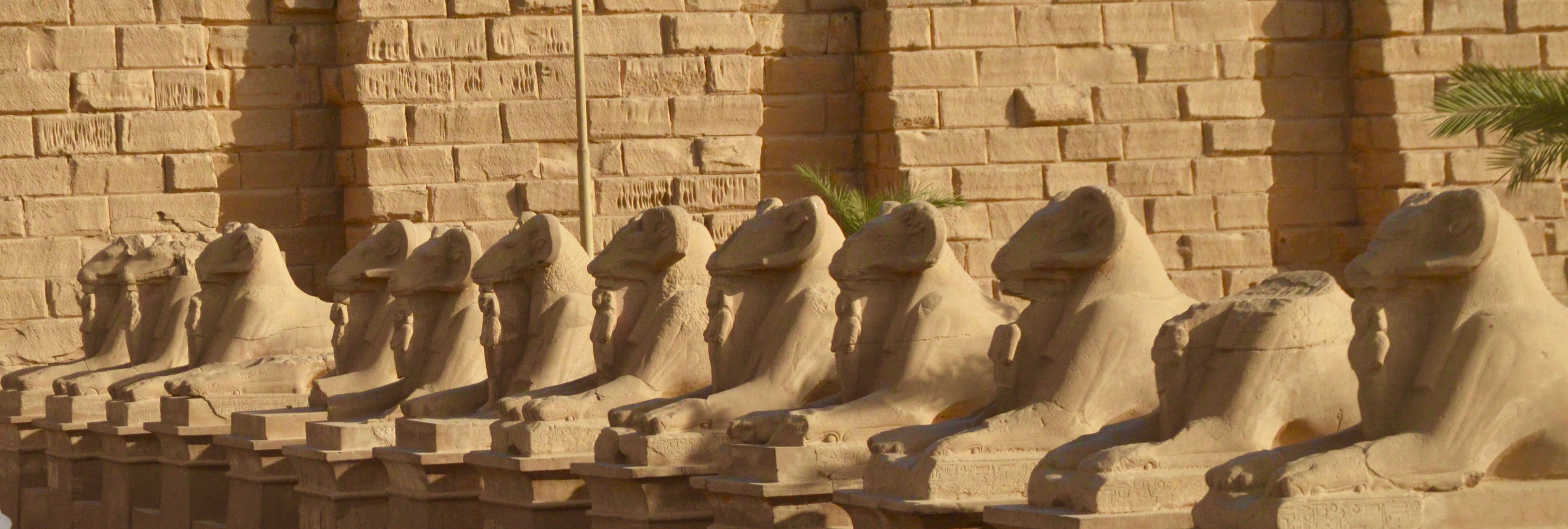
If you look closely at this second photograph you can see a tiny figure between each sphinx’ paws. That’s good old Ramses II who never could erect enough statues of himself during his sixty-seven year reign.
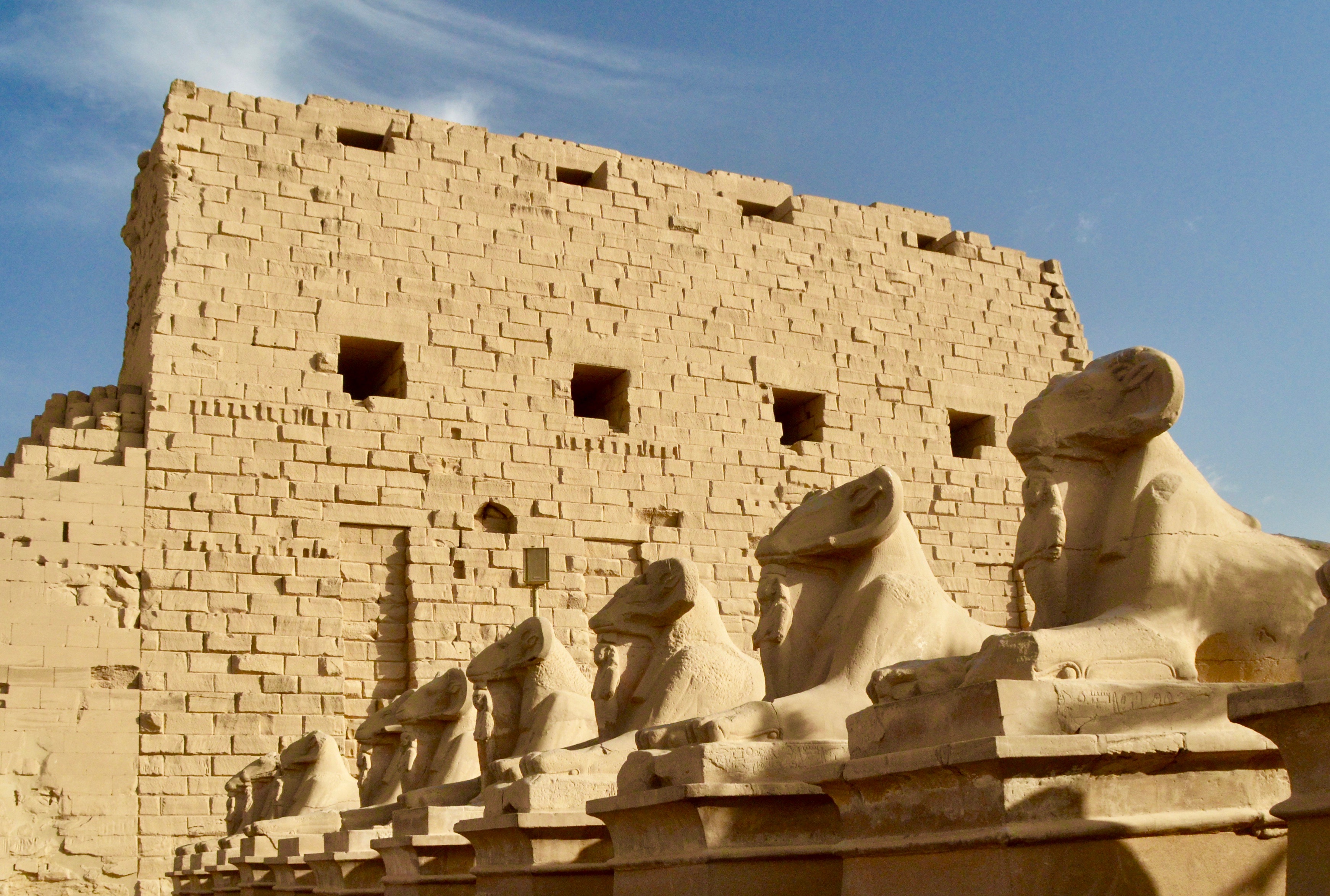
You will also notice that this first set of pylons is pretty unimpressive compared to what we saw at Philae, Edfu and just down the road at Luxor. That’s because they were never finished. In a sort of, the first shall be last paradox, these date from a mere 370 or so B.C. and marked the very last period of an independent Egypt, over 1,200 years after Senusret I began his ambitious project at Karnak. Think about that the next time you complain about construction delays. How’d you like to be stuck in traffic for a thousand years?

After crossing through the entry pylons Ahmed points out a pile of rubble against the back of the right pylon which dates from the last construction work done at Karnak. It gives us an idea of how these things were built as this would have been removed after the pylon was completed.
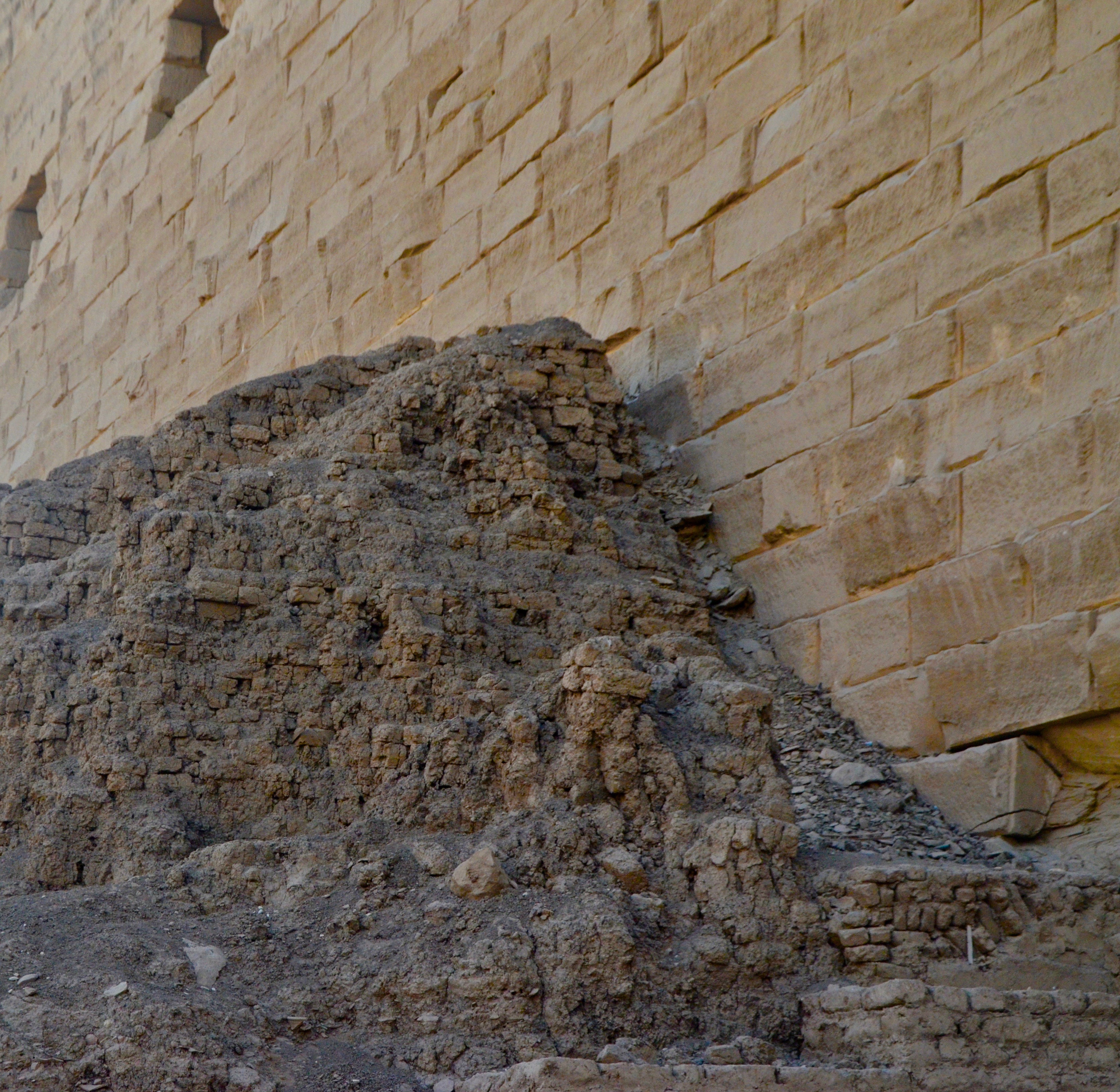
After the initial disappointment of the unfinished pylons things rapidly get more interesting starting with this giant statue of, who else, Ramses II wearing the double crown of a united Egypt. To photo him straight on you need to include his palm tree hat as well.
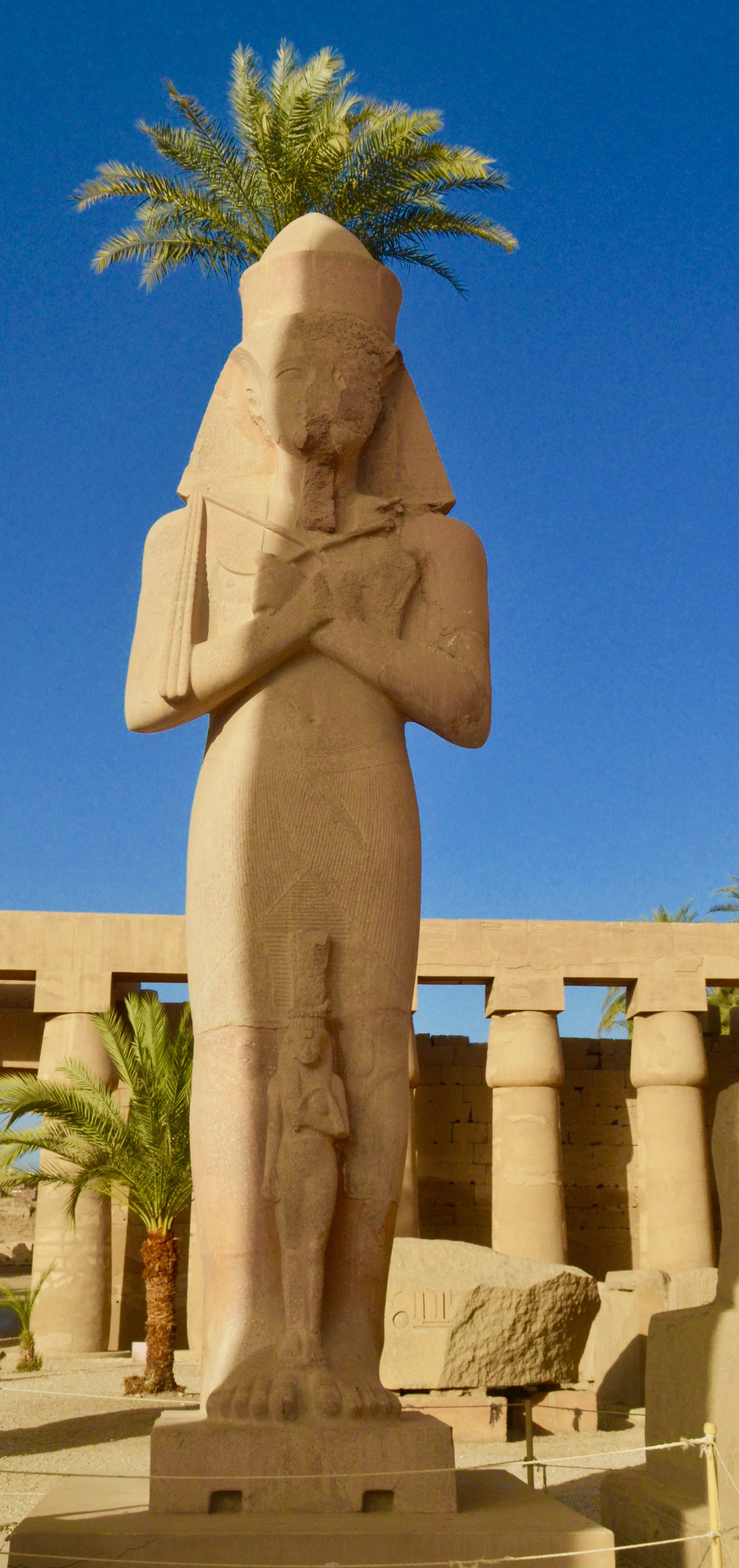
This is all that remains of the second pylons and the ten massive pillars that once stood in the inner court, but if you look closely you can see that there are quite a few pillars still standing in what is the real star of Karnak, the hypostyle.
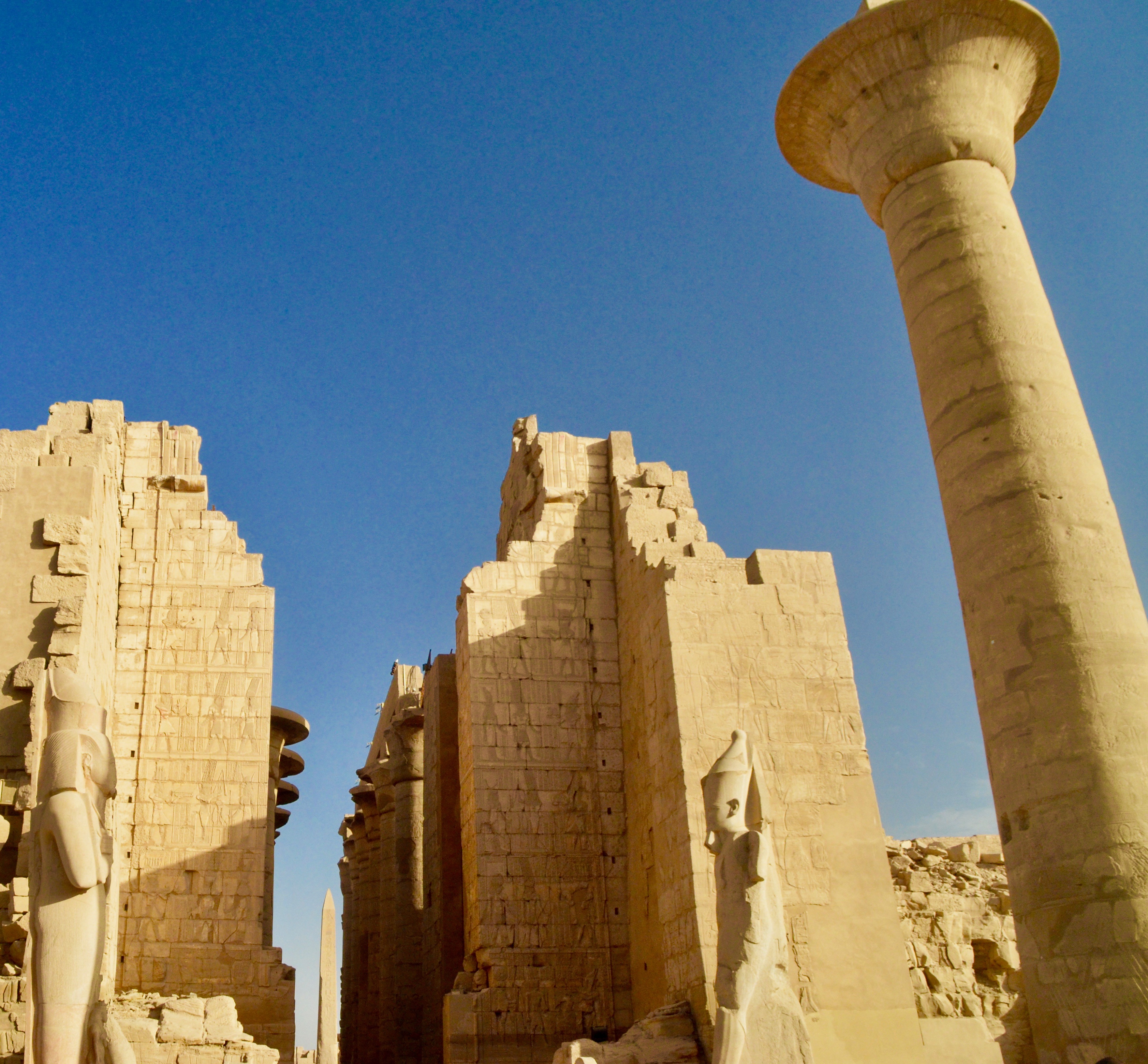
The Hypostyle
A hypostyle is really quite simple – it is a building that has its roof supported by pillars. Here is a floor plan of the hypostyle at Karnak which has an amazing and world record one hundred and thirty-four truly massive pillars that once held up the roof that is long gone.
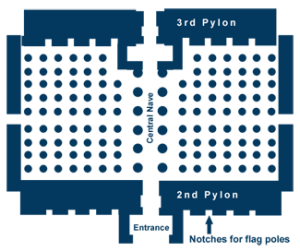
Entering the hypostyle at Karnak is unlike any experience you will ever encounter in a visit to an ancient archaeological site. The Egyptians had not mastered the gothic arch, vaulted ceiling and flying buttresses that allowed medieval architects to support massive roofs with a relatively small number of pillars. They needed everyone of these pillars to hold up the roof. With the roof not there, walking between the pillars with the sun mostly blocked out, you get the surreal effect of a combination of shadows and sun rays that people have been noticing for hundreds of years. Also standing at the base of the eight massive central pillars that top out at 80 feet, you are in awe of how they could possibly have erected these things with such precision that they still stand over 3,200 years later.
Photographing the hypostyle is not easy and some shots look better in black and white sort of giving the cachet of age to them.
This is Alison at the base of one of the eight central pillars. I have seen nothing comparable in size in the ancient world except perhaps columns for the Temple of Diana at Ephesus which you can see today as part of Hagia Sophia in Istanbul.
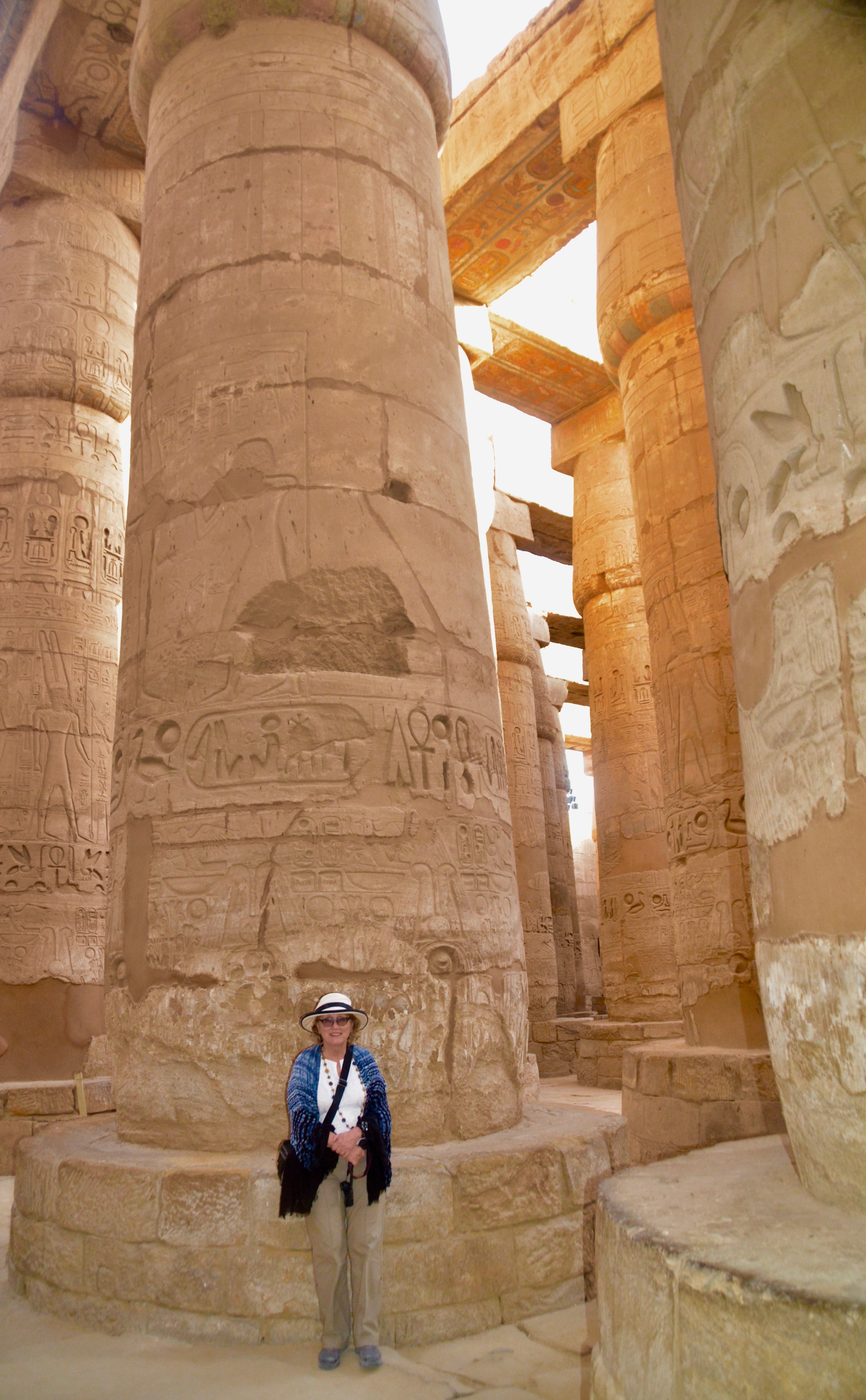
Here you can see remnants of the paintings and hieroglyphs that decorate the pillars and cross beams and provided inspiration for Lovecraft’s obsession with Karnak as a place associated with the outré and arcane.
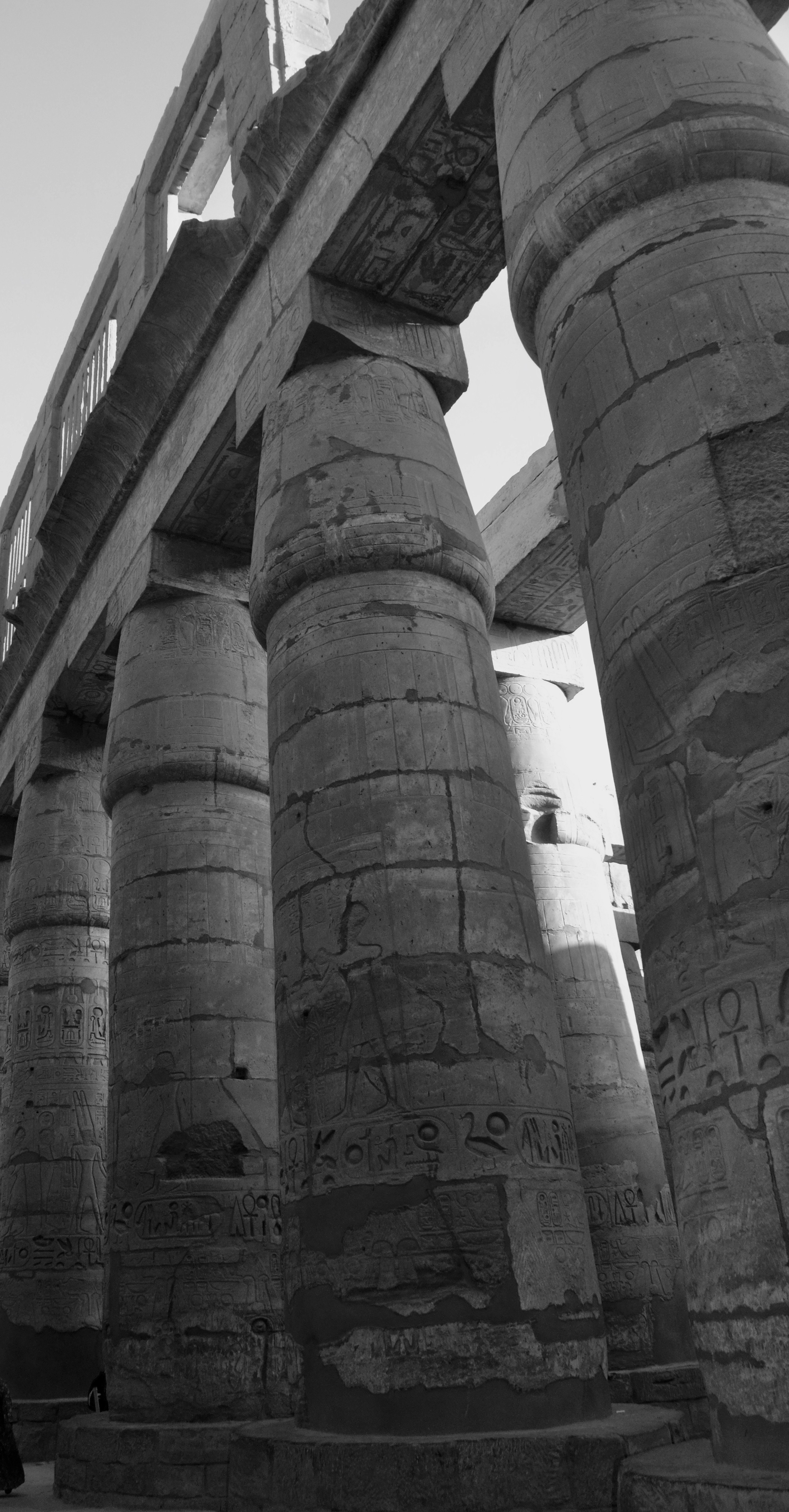
This photograph goes some small way to showing the contrast between the sunlit and shadowed portions of the hypostyle.
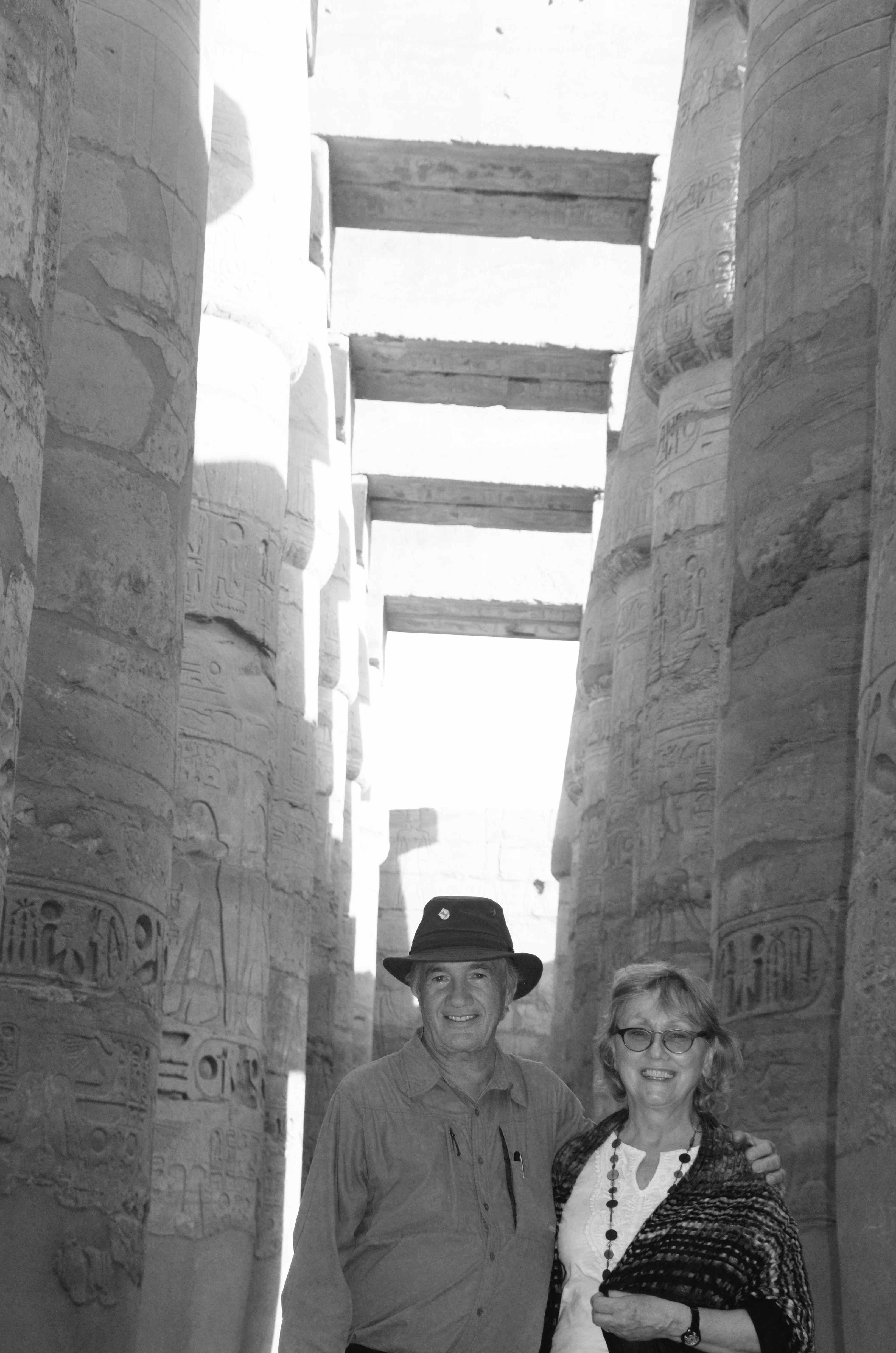
From the hypostyle you enter an area dominated by the sacred lake and the two remaining obelisks that have not been removed by the Romans, Ottomans, Napoleon, the Brits or the Yanks. At one time there were a dozen. The large obelisk was erected by Queen Hatshepsut and stands 97 feet tall while the smaller was erected by Thutmose III.
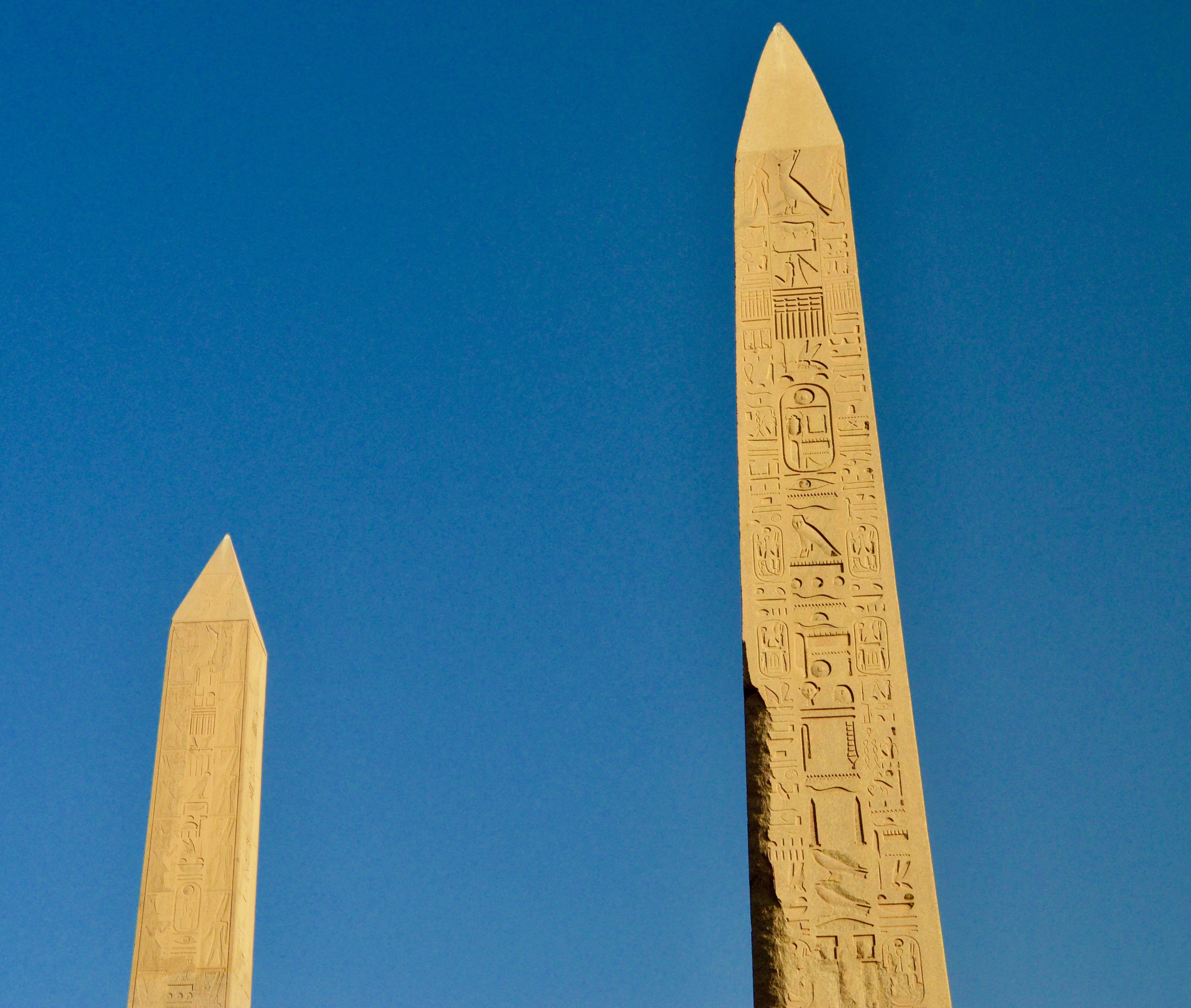
To get a comprehensive view of the Amun complex you should walk around to the back of the Sacred Lake from where you get this view. Note how the reflections of the two obelisks appear in the water.
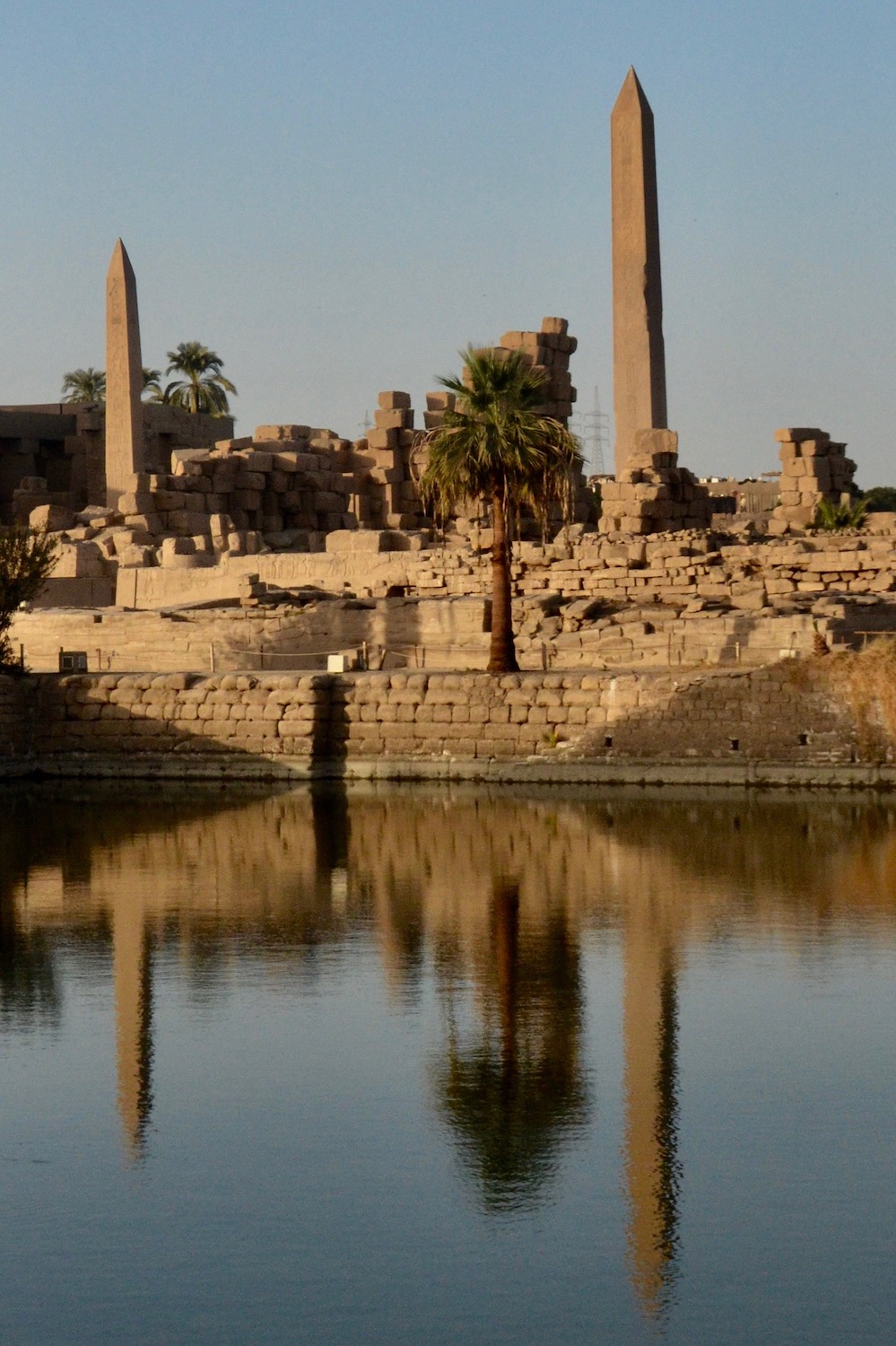
Despite all the people in this photograph, mostly Chinese tourists, none bothered to make the trek to the back of the lake for this view.
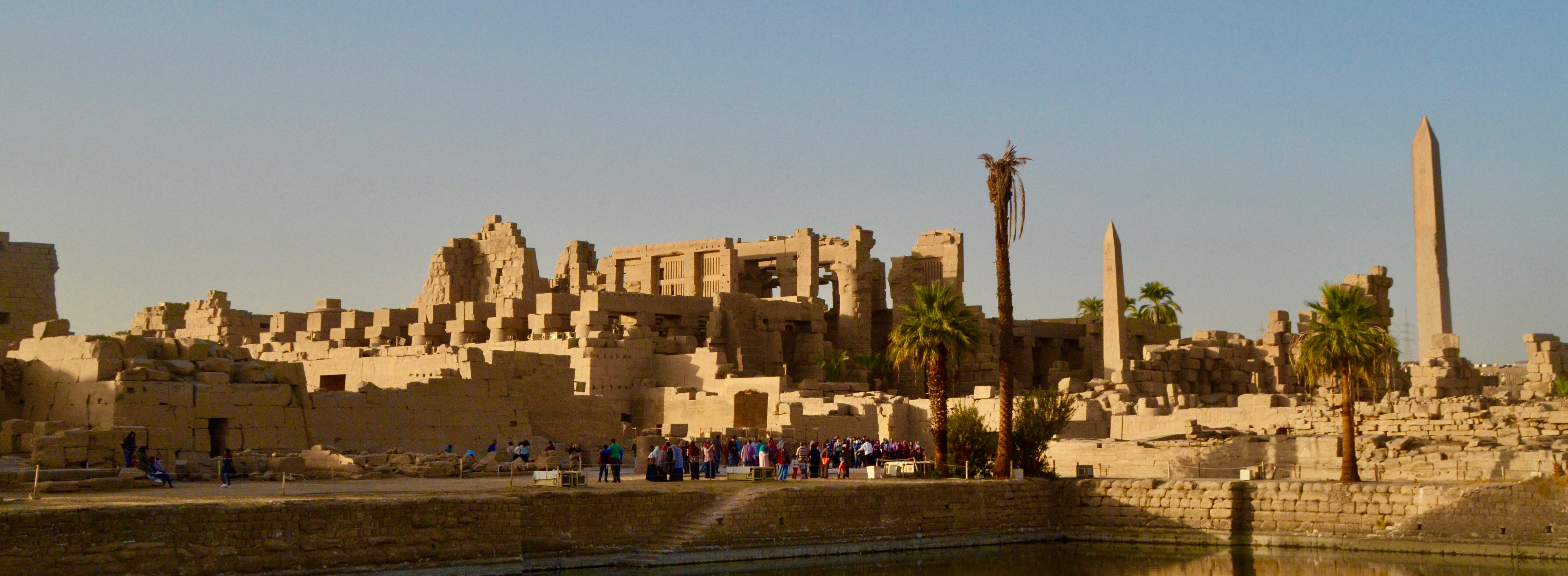
Karnak has three other smaller attractions that are unique. The first is this rather battered looking sphinx found within the Karnak complex. The reason it is important is because it is the only known contemporary portrait of Tutankhamen.
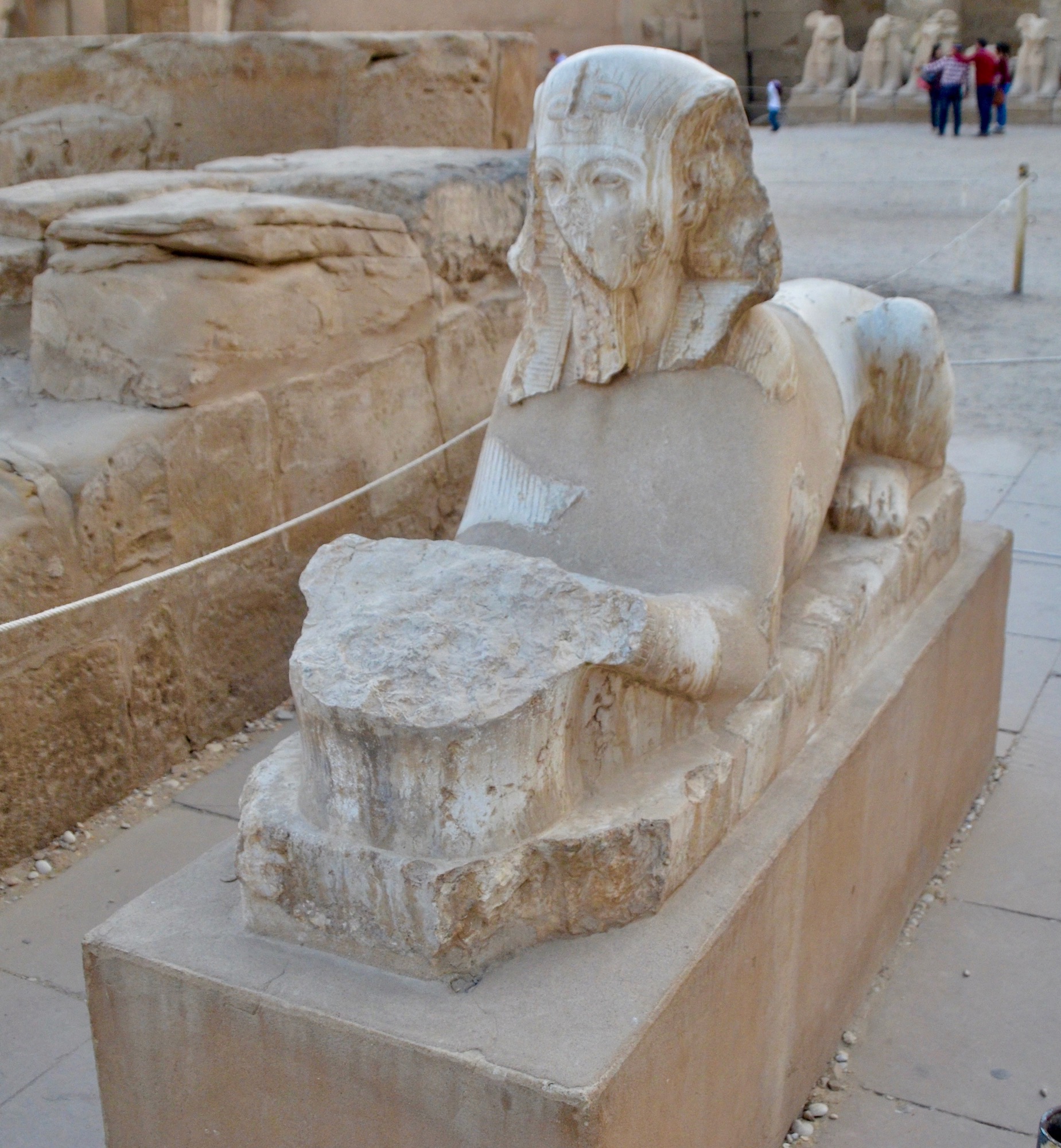
The second is this statue of a scarab. Scarabs were sacred to the Egyptians and considered a good luck charm. Jewelry in the shape of scarabs are very common finds, but for some reason they didn’t do full blown statues, except for this one at Karnak.
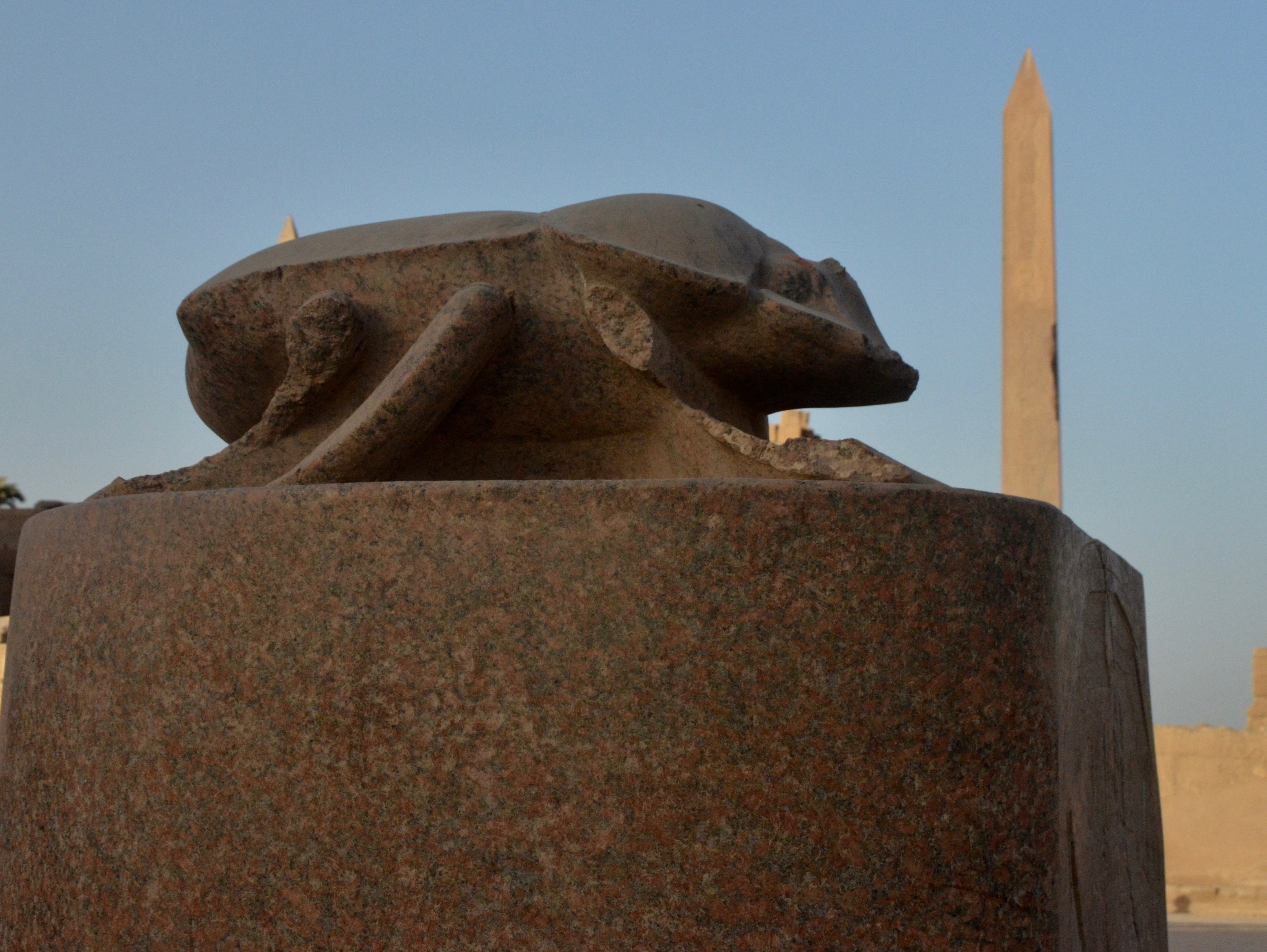
The third unique thing is the legend associated with this scarab statue. There are a number of varieties and they apply to young women. My favourite version and the one related by Ahmed was that if a young woman walked around the scarab three times she would find wealth, three more times and she got good health and lastly three more times for love. It doesn’t seem to have occurred to the myth makers that a healthy and wealthy young woman seldom has a problem finding suitors.
Here are four Australian girls doing their best to achieve results.
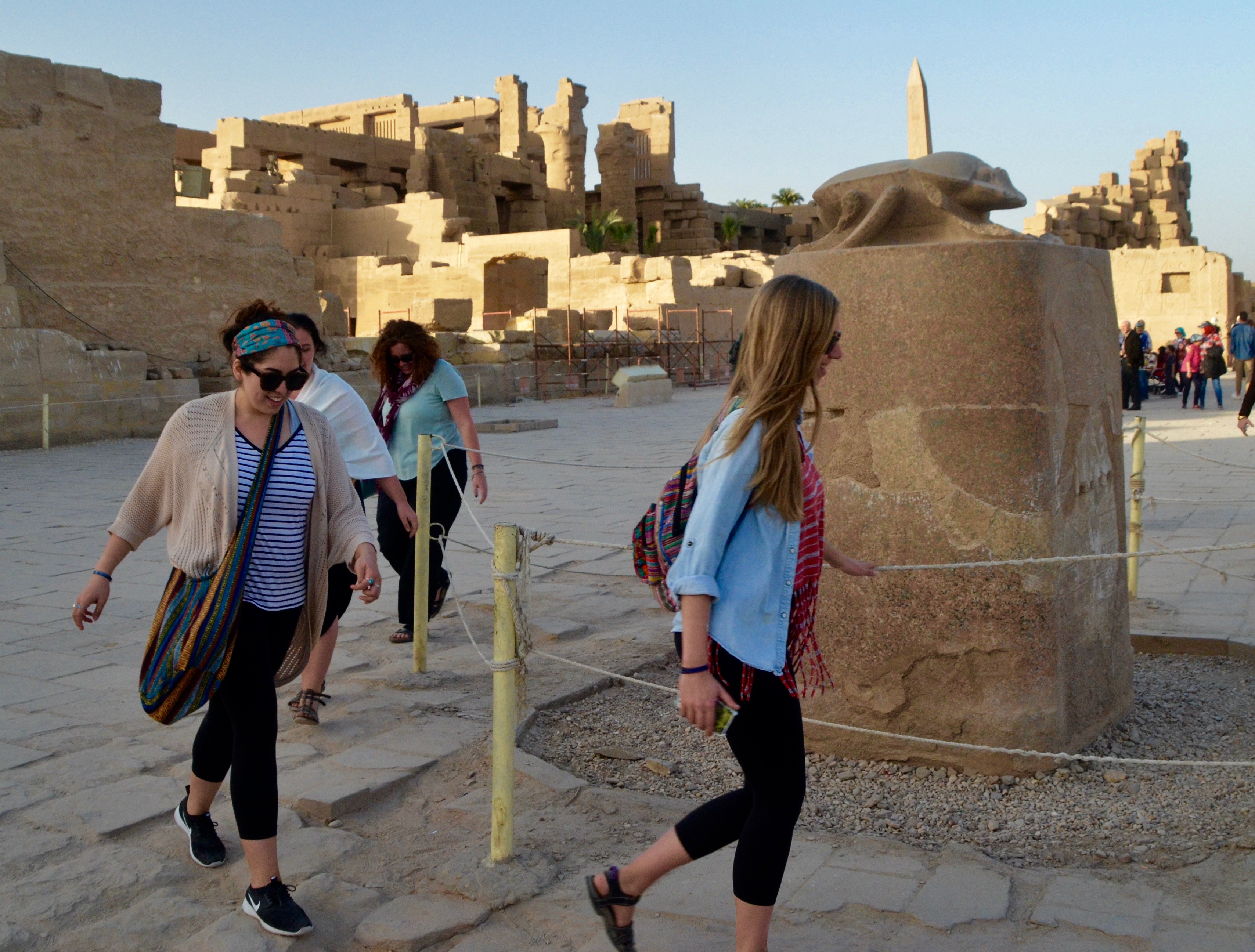
BTW, the scarab sounds like quite a noble insect when in reality it’s nothing but a dung beetle.
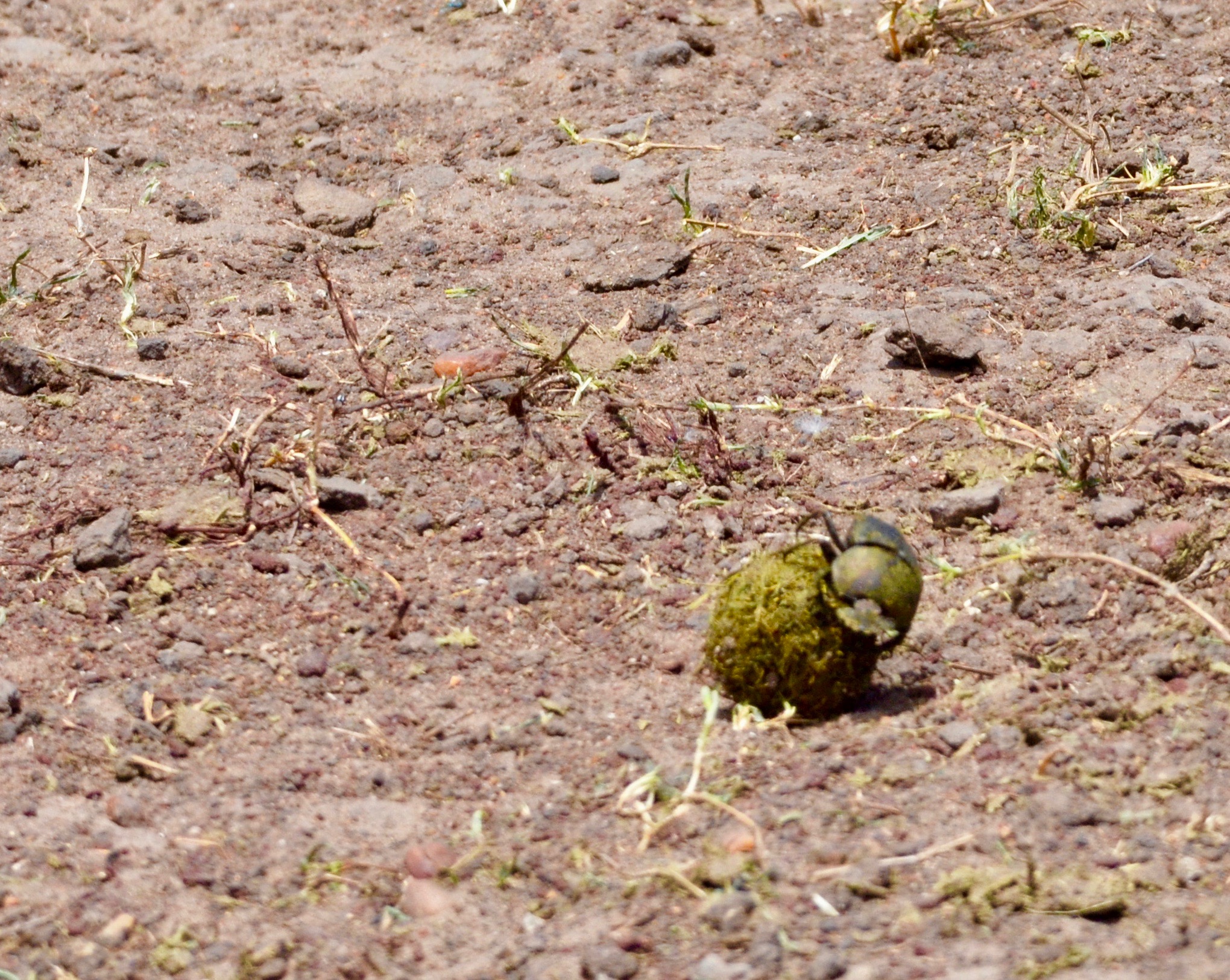
As we made our way back toward the entrance Alison had an unusual experience. Blondes are quite rarely seen in Egypt, even dyed ones, and several Egyptian women approached her to ask if they could have their picture taken with her. At first, I thought it might be some sort of scam, but it wasn’t. They really wanted to show their friends that they’d met a blonde woman. Weird or what?
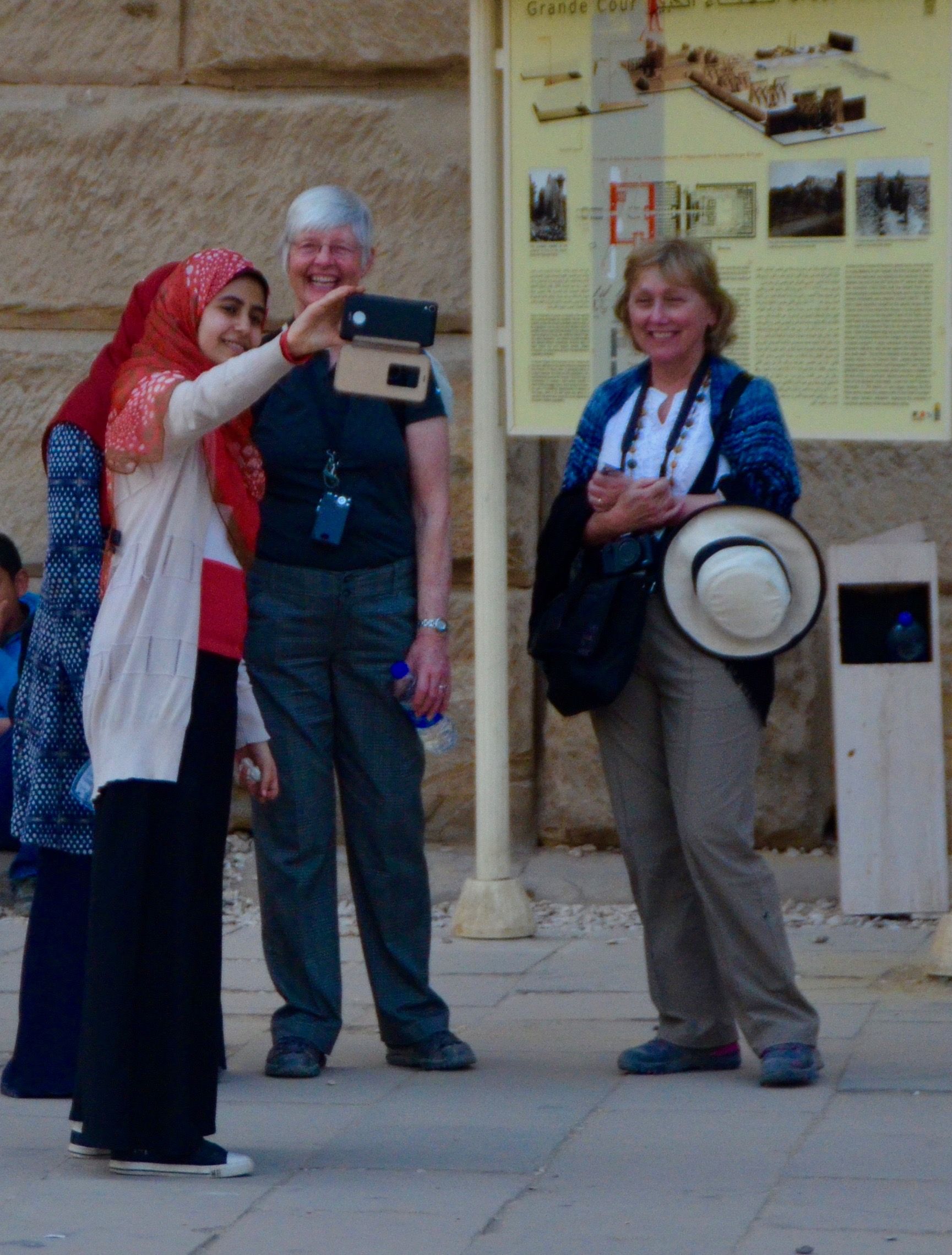
That concludes our tour of Karnak and it lived up to its billing as one of the wonders of the ancient world.
In the next few posts we’ll cross to the West Bank of the Nile and visit the many attractions on that side. Hope you’ll join us.
Here is a link to the Egypt photo gallery which contains photos from all the Egypt posts.

